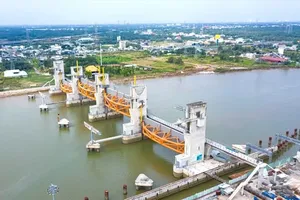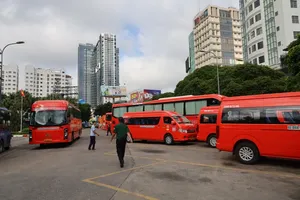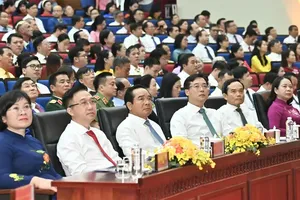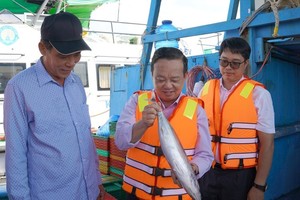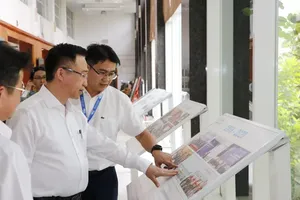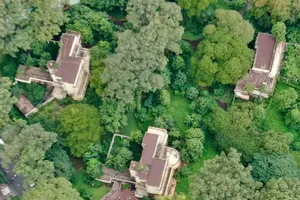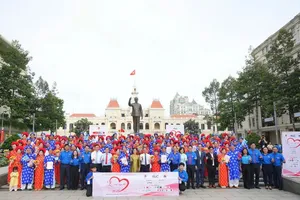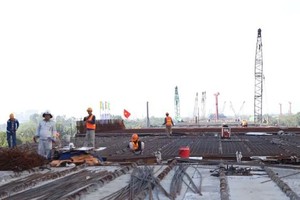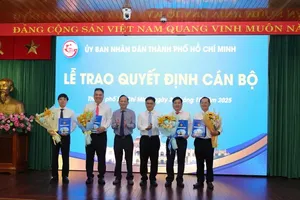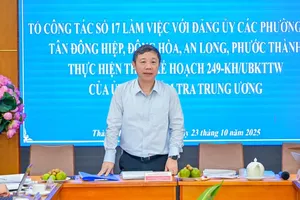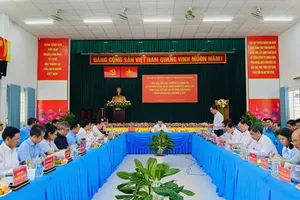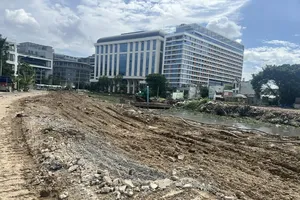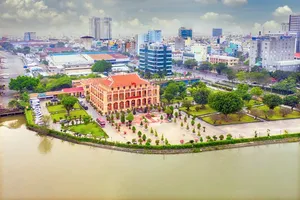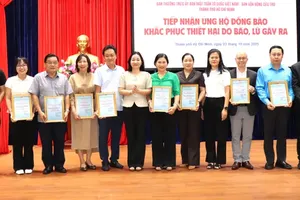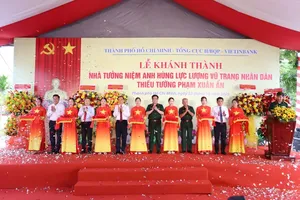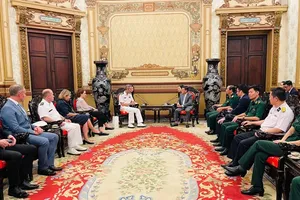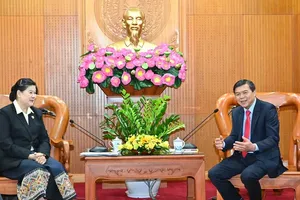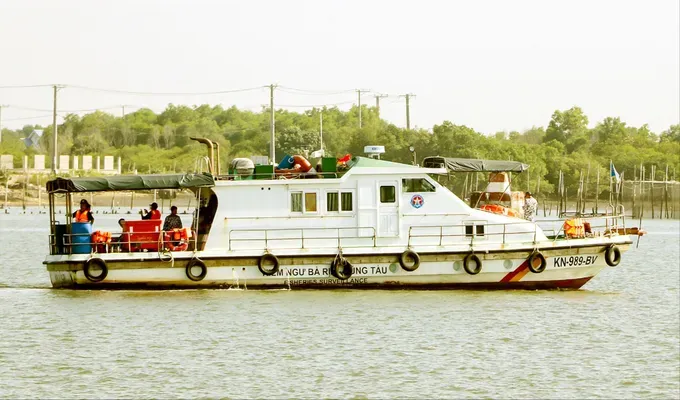
Fleet management has been identified as the central, critical task that will directly determine whether the country can finally end the problem of vessels violating foreign waters. HCMC, for its part, has rolled out a synchronized set of technological and administrative solutions to keep tight tabs on every single boat.
The city has constructed a multi-layered monitoring system, ensuring vessels are fully equipped with mandatory vessel monitoring systems (VMS) and valid fishing licenses. VMS monitoring is a 24/7 operation, allowing authorities to instantly spot any boat that loses its connection or strays across the boundary line.
“We’re proactively calling and texting captains to find out why the connection was lost and get it fixed. We then require them to report their position every six hours to the Fisheries and Fishery Surveillance Sub-Department’s shore station,” explained its Deputy Head Dang Van Luong. “We constantly remind captains not to cross the line to illegally fish in foreign waters and order them to return to Vietnamese waters immediately if they have.”
At the nine fishing ports across the city, the electronic catch documentation and traceability (eCDT) system has been fully implemented for 100 percent of vessels, which helps supervisors cross-check catch volume and logbooks against VMS data, ensuring the legality of the seafood’s origin.
Mr. Dang Van Luong affirmed that fleets’ data is constantly being reviewed and updated. For inactive or “onshore” boats, local teams are deployed to photograph and log the GPS coordinates of every vessel. This data is then handed over to community groups and border guards for close monitoring, making sure no inactive boat can just sneak out to sea.
This, combined with a strong push in public awareness campaigns and ramped-up inspections, has yielded encouraging results. Since the beginning of 2025, the city hasn’t recorded a single case of an HCMC fishing boat being seized by a foreign country.
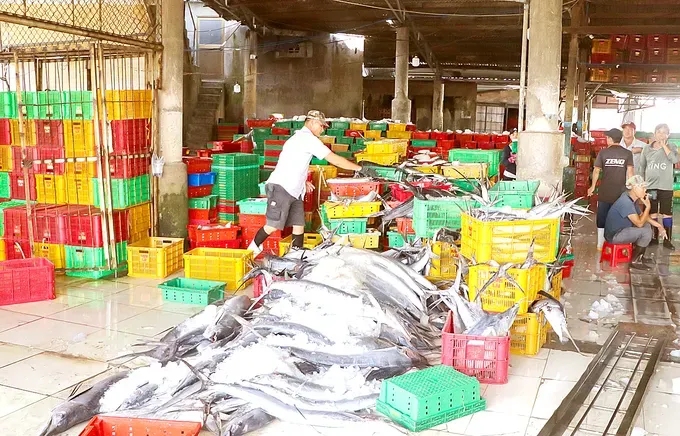
Looking ahead, HCMC authorities plan to continue tightening vessel management, finalizing all registrations, and maintaining 100 percent VMS operation on all active ships.
But while management is getting stricter, coastal localities are now facing the core issue: the fishermen’s livelihoods. This, it’s understood, is the biggest hurdle in reducing the number of non-compliant boats.
Just this past October 20, Vice Chairman of the HCMC People’s Committee Bui Minh Thanh and Head of the city’s IUU Steering Committee conducted a field inspection of the Sao Mai sea area in Vung Tau Ward and held working sessions with local ward and commune leaders.
At that meeting, Vice Chairman of the Long Hai Commune People’s Committee Nguyen Minh Tam reported that his locality is currently managing 171 inefficient fishing boats that are just sitting idle onshore. He petitioned for a resolution to delete the records for 13 of those boats and, crucially, to register 71 other vessels that are currently “stuck in limbo” because of an old decision by the Ba Ria – Vung Tau provincial authorities.
“The majority of the trawling fleet is concentrated in the former Phuoc Tinh fishing village,” Mr. Nguyen Minh Tam explained. “People here are desperate to change jobs, but they just don’t have the capital. We’re asking the HCMC People’s Committee to please consider a support policy to help them transition.”
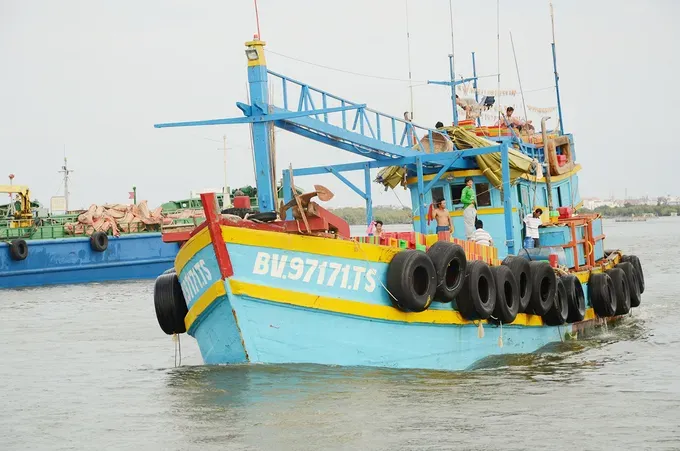
Vice Chairman Le Hoai Nam of the Binh Chau Commune People’s Committee noted that his area has 111 non-compliant boats. “Through our talks, it’s clear many fishermen want to switch careers, but there’s no policy to support them,” he said. “Their greatest hope is for the State to provide some assistance to help them transition their fishing careers.”
During the inspection at the Sao Mai sea area, as the fisheries logistics vessel BV.98432.TS docked at Incomap Port, Vice Chairman of the HCMC People’s Committee Bui Minh Thanh boarded the ship to speak directly with its captain, Nguyen Minh Hung. The captain’s affirmation was blunt: “We only buy fish from Vietnamese boats fishing within Vietnam’s territorial waters.”
Vice Chairman Bui Minh Thanh then asked Captain Nguyen Minh Hung to continue spreading that message at sea – remind other fishermen not to violate foreign waters, and that logistics boats won’t buy from foreign vessels.
During the inspection, Mr. Thanh also personally visited the Hanh Lai seafood collection depot at Incomap Port. Its owner Nguyen Thi Hanh confirmed: “At the fishing ports, the eCDT system is 100 percent implemented for all boats coming in and out, monitoring the catch volume as a basis for traceability. To ensure the origin, fishermen must have a license, follow the rules, and log their catch.”
Faced with this reality, Vice Chairman Bui Minh Thanh directed his units to focus on untangling these problems and building a support mechanism.
He assigned the Department of Agriculture and Environment (NN-MT) to review, advise on, and amend any current regulations that are “no longer suitable.” He also ordered them to fast-track the review of licensing and re-licensing applications for boats, pushing for completion by early November.
Alongside this, the Department of Agriculture and Environment was tasked with taking the lead on advising on “support policies for fishermen and for the fishing industry” as a whole.
As of October 17, 2025, HCMC manages a total of 4,857 fishing boats. Among them, 2,321 boats (47.78 percent) are over 15m long, a group that poses the highest IUU violation risk and requires the tightest monitoring.
